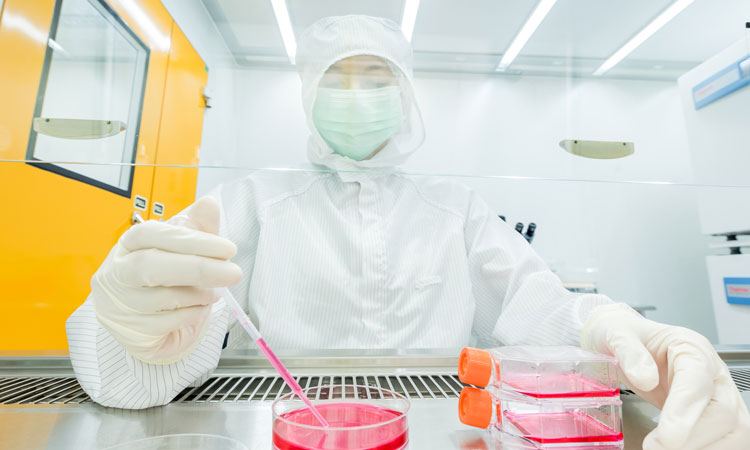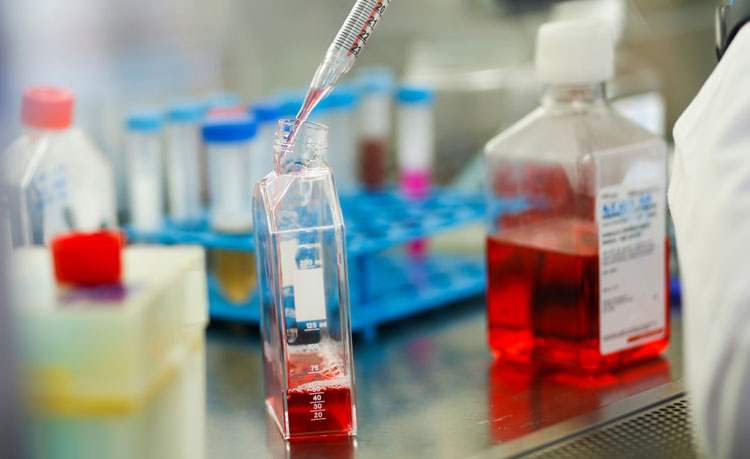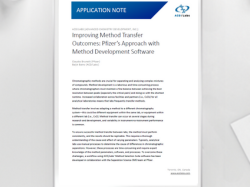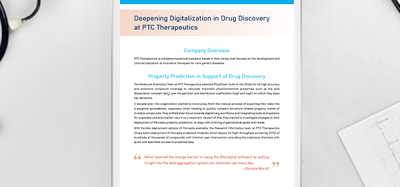Streamlining bioprocessing for gene therapy
Posted: 26 December 2023 | Kai Lipinski (ReciBioPharm) | No comments yet
Adopting technological advances in upstream and downstream processes is vital to the gene therapy space, says Kai Lipinski, CSO at ReciBioPharm. Here he explores emerging technology trends and discusses how they can help to overcome key challenges facing gene therapy manufacturers.


The number of approved gene therapies for the treatment of monogenetic disorders and diseases has increased in recent years, reflecting the field’s rapid advances and the development of revolutionary new technologies and techniques. The increasing adoption of technologies promoting safety, efficacy and reduced production costs has been a persistent trend that will continue to benefit the industry and help to treat a broader patient population.
Capabilities in suspension cell lines and proprietary cell lines are becoming increasingly important to competitiveness within the gene therapy industry
By streamlining upstream and downstream processing (USP and DSP) with the incorporation of new technologies, drug developers can improve safety and efficacy while lowering production costs, potentially reducing drug prices and thereby helping to promote patient access. Production cost is currently a fundamental concern for many gene therapy developers, particularly given that some treatments cost millions of dollars per single dose (eg, $3.5 million for Hemgenix [AAV5-hFIX-Padua]).1 As revolutionary upstream and downstream technologies become a reality, biopharma companies will need to determine how best to integrate them into their current systems.
Innovating the upstream
The design and optimisation of USP is key to creating a successful therapeutic. Innovations in biotechnology, such as genetic engineering, enable the development of optimised microbial strains and production processes, leading to increased yields, reduced production costs and enhanced scalability. This enhances the commercial viability of USP. There are numerous avenues where these advances are converging to benefit the gene therapy industry. As a result, we can expect to see growing numbers of gene therapy developers and manufacturers adopting new techniques and technologies into their upstream processes.
Suspension and proprietary cell lines
The demand for large batches of gene therapy products is driving the use of suspension cell lines to facilitate scaling capacities. This demand is coupled with a movement to produce stably transfected proprietary cell lines that can shorten timelines and produce high-quality products. Having proprietary cell lines in house can also speed up USP by reducing the need to outsource and the time required to grow the cells before use. Proprietary cell lines also allow companies to attain IP and build brand recognition.2 Capabilities in suspension cell lines and proprietary cell lines are becoming increasingly important to competitiveness within the gene therapy industry.
Upstream single-use systems and scalability
Improvements to manufacturing systems fully based on single-use systems (SUS) have enabled scalability up to 6,000L, if needed.3 Industry research and development has also given manufacturers better media and supplements that facilitate high productivity even in the absence of foetal bovine serum for suspension-based gene therapy vector manufacture.4
Novel inducible systems for enhanced control
Inducible systems allow external cues to control the precise onset of gene expression. Advanced inducible systems to better regulate the expression of certain genes will improve the generation of packaging and producer cell clones, giving companies more control over gene expression for improved safety as well as efficiency.
Dynamism in downstream processes
As with upstream processes, there are also many technologies set to elevate downstream processes (DSP) in gene therapy development and manufacturing. These advances in downstream technology aim to reduce levels of process-related contaminants for the safety, quality and stability of the final product.
Single-use systems
One notable trend in DSP is the adoption of SUS technologies.
Bottlenecks in buffer preparation – solving downstream issues for upstream gains
By introducing advanced SUS technologies into depth filtration, cross-flow filtration, chromatography and final sterile filtration steps, gene therapy developers can decrease the risk of contamination and the amount of validation needed compared with permanent fittings. SUS also enables rapid scaling of production, providing a quick response to changes in market demand and faster turnaround times as cleaning or changeover is not required. As compared with stainless steel alternatives, SUS offers reduced cleaning requirements – from decreased water and energy consumption to reduced waste – helping to meet sustainability needs.5
Advanced analytical technologies
Another trend in this area is the adoption of increasingly sophisticated analytical technologies.


Achieving cost optimisation requires identifying opportunities for process simplification, improving productivity and optimising resources
Gene therapy products are very complex and manufactured with a cellular host substrate, which makes analytical characterisation far more challenging. Fortunately, researchers and industry have made big steps forward in analytical instrumentation and therefore characterisation of gene therapy viruses. New and improved analytical developments range from digital polymerase chain reaction (PCR), bio-layer interferometry, flow virometry, nano-tracking analysis, flow-induced dispersion analysis, analytical ultracentrifugation and charge detection mass photometry. In part, this progress in analytical testing has been driven by increasing demands from regulatory agencies to show particular safety and potency profiles for therapeutics entering clinical investigation.
Potential challenges to consider when manufacturing gene therapies
Although the advancement of gene therapies is undoubtedly a time of excitement in healthcare, there are also several challenges to consider when planning and executing gene therapy manufacturing. These challenges predominantly surround scalability, stability, regulatory compliance and access to patients.
Viral vector production scalability
Innovations in USP have improved the production of viral vectors at large scales through the development of transient transfection systems and stable producer lines. However, challenges may arise in optimising and scaling up these systems. Scaling up transient transfection can be challenging due to limitations in the efficiency and consistency of transfection across large volumes.6 High transfection efficiency becomes more difficult as the scale increases. Ensuring consistent vector quality is essential and all regulatory requirements related to safety and potency should be considered.
Cost optimisation
Although advances in gene therapy also extend to technology that has reduced production costs, these therapies remain expensive due to the complexity of manufacturing processes and the need for specialised facilities and equipment. These can include the development of high‑yield cell lines, improved transfection techniques and optimised bioreactor designs, all of which are advantageous when looking to enhance vector productivity and yield. Achieving cost optimisation requires identifying opportunities for process simplification, improving productivity and optimising resources. Ensuring scalability of these manufacturing processes is essential for cost optimisation.7
Regulatory compliance in an evolving space
Gene therapies are subject to rigorous regulatory requirements to ensure patient safety and product efficacy. These can be complex as the regulatory guidelines on gene therapies are constantly evolving. Moving forward, manufacturers should be familiar with and adhere to good manufacturing practice (GMP), demonstrating robust assurance systems throughout the manufacturing process of such therapeutic products.8
Supply chain management
Ensuring a secure and reliable supply chain is crucial to meeting the increased demand for gene therapies. Manufacturing gene therapies relies on a complex supply chain of raw materials, critical reagents and specialised components.9 As the therapeutic trends align with gene therapy, manufacturers will need to identify potential vulnerabilities within the supply chain, establish contingency plans and collaborate closely with suppliers to mitigate risks.
Patient access and affordability
Despite the advancements in technology and process optimisation, ensuring patient access to gene therapies at an affordable cost remains a significant challenge.10
We can expect continuous development, improvement and adaptations of regulatory guidelines as the science of gene therapies advances quickly
Manufacturers must work alongside payers, providers and policymakers to develop finance options and establish equitable access programmes to make gene therapies affordable and therefore accessible to a broader patient population.
Each manufacturing process and subsequent gene therapy product will have unique considerations and requirements. As trends change, at times rapidly, these considerations should be re-evaluated and addressed to ensure gene therapy production processes remain seamless.
A persistent trend to heed in future
Gene therapy developers and manufacturers must be aware of the technological developments occurring in USP and DSP and, if necessary, adapt accordingly. Together with their manufacturing partners, gene therapy producers must continue to make efforts to reduce the cost of goods to ensure the commercial viability of therapies and deliver potentially life-changing treatments to patients. Further, we can expect continuous development, improvement and adaptations of regulatory guidelines as the science of gene therapies advances quickly, alongside evolving market access agreements.
References
- Naddaf M. $3.5-million hemophilia gene therapy is world’s most expensive drug [Internet]. Scientific American; 2022 [cited 2023 Jun]. Available from: https://www.scientificamerican.com/article/3-5-million-hemophilia-gene-therapy-is-worlds-most-expensive-drug/
- Nielsen J, Tillegreen CB, Petranovic D. Innovation trends in Industrial Biotechnology. Trends in Biotechnology. 2022;40(10):1160–72.
- Bhatkhande S. Single-use bioprocessing technologies enabling more rapid vaccines production [Internet]. 2023 [cited 2023 Jun]. Available from: https://www.americanpharmaceuticalreview.com/Featured-Articles/596309-Single-Use-Bioprocessing-Technologies-Enabling-More-Rapid-Vaccines-Production/
- Subbiahanadar Chelladurai K, Selvan Christyraj JD, et al. Alternative to FBS in animal cell culture – an overview and future perspective. Heliyon. 2021;7(8).
- Hederman J. Single-use systems: The future of biopharmaceutical processing [Internet]. 2023 [cited 2023 Jun]. Available from: https://www.medicaldesignbriefs.com/component/content/article/mdb/pub/features/articles/40742
- Shupe J, Zhang A, Odenwelder DC, Dobrowsky T. Gene therapy: Challenges in cell culture scale-up. Current Opinion in Biotechnology. 2022;75:102721.
- Cost reduction in cell and gene therapy 2023: Cost-efficiency coupled with efficacy is key moving forward – researchandmarkets.com [Internet]. 2023 [cited 2023 Jun]. Available from: https://www.businesswire.com/news/home/20230105005524/en/Cost-Reduction-in-Cell-and-Gene-Therapy-2023-Cost-Efficiency-Coupled-With-Efficacy-is-Key-Moving-Forward—ResearchAndMarkets.com
- Addressing the unique regulatory challenges of Gene Therapies [Internet]. 2022 [cited 2023 Jun]. Available from: https://www.biopharma-excellence.com/articles/addressing-the-unique-regulatory-challenges-of-gene-therapies/
- Digiusto D, Leistler B, Walls T. Overcoming raw material challenges in Cell & Gene Therapy Manufacturing. Cell and Gene Therapy Insights. 2020;6(2):415–26.
- UK BioIndustry Association. Ensuring patient access to cell and gene therapies [Internet]. 2021 [cited 2023 Jun]. Available from: https://www.bioindustry.org/resource-listing/ensuring-patient-access-to-cell-and-gene-therapies—the-case-for-an-innovative-payment-model-pdf.html
About the author
Kai Lipinski, PhD joined Vibalogics, now ReciBioPharm, in 2010 as Head of Cell Culture and Virus Production. He was named Head of Process Development in 2013, then promoted to Chief Scientific Officer (CSO) in 2020. At ReciBioPharm, Kai is central to the establishment of virus process development and manufacturing capabilities as well as technical developments. Kai has a wealth of experience in viral vector manufacturing. He served as Principal Scientist at Cobra Biologics, focusing on USP development for virus and mammalian protein expression projects. Prior to that, he worked as Senior & Principal Scientist at ML Laboratories, where he was responsible for the development of targeted adenoviral vectors for cancer gene therapy approaches. Kai has a PhD in Transcriptional Regulation by Adenoviral E1A Proteins and a Post-Doc, also on Transcriptional Regulation, from the University of Duisburg-Essen, Germany.
Issue
Related topics
Bioprocessing, Chromatography, Downstream, Gene therapy, Single Use









